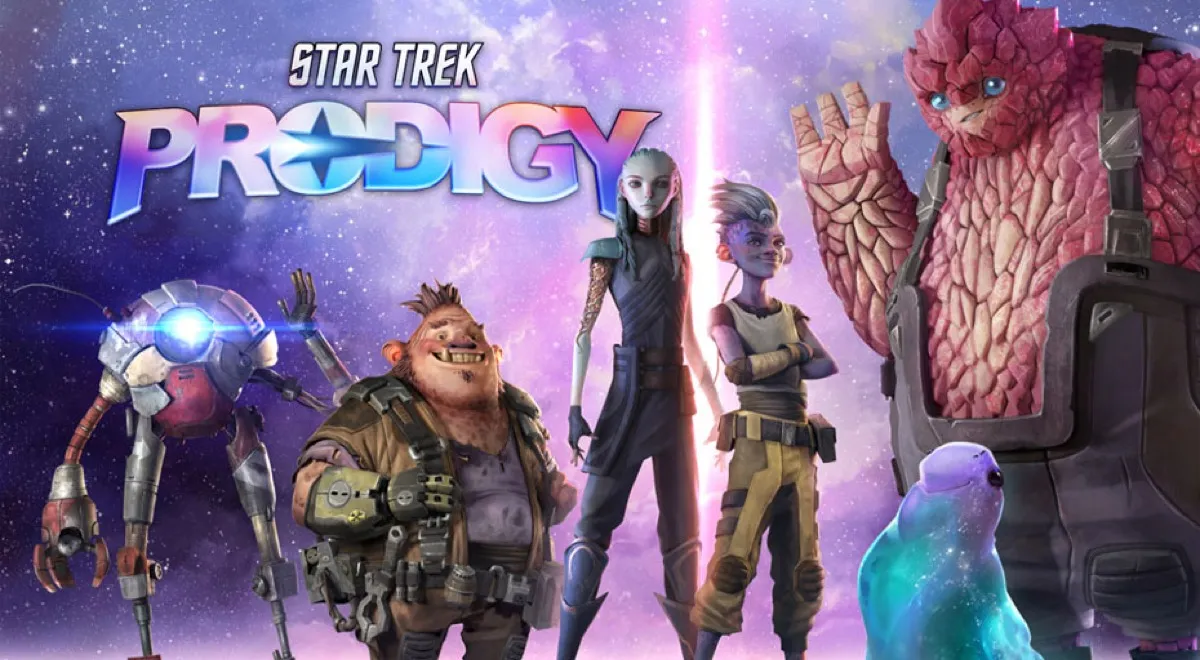I have always been protective of my little brother. As kids, we had adventures in our backyard together, turning over rocks, watching animals, building things. I was an inquisitive kid, a bit skittish, but never so much that it prevented me from poking things to figure out what they did. The backyard was a magical place, as were parks and seashores. I spent a lot of time inside, too, though. I had a fierce love for adventure games.
Every single one of these bases is covered in Lilly Looking Through. It’s no surprise that I took to it immediately.
The game follows its title protagonist on her search for her brother, who’s been stolen by a magical strip of fabric. It happens. With the help of a pair of time-shifting goggles, Lilly journeys through forests and lakes and canyons, always staying brave. Her world is wondrous, a gorgeously realized place of soft lights, gnarled trees, and artful machines. It’s an old world, too, possibly ancient. Lilly lives alongside ruins, restored to life through her mysterious lenses. Most of the puzzles she encounters rely on switching between times, altering one to aid the other. Run across a bridge that has fallen down. Move a rock so it will weather away. Plant an acorn in the past, so you can climb a tree in the future.
Lilly is a terrific little heroine, despite her relative silence and absence of backstory. For as simply as she’s designed, she’s surprisingly emotive. Her big eyes invoke that hallmark childhood blend of concern and curiosity. I saw that look many times this past Halloween, on the faces of kids unsure about taking candy from a stranger wearing a big cardboard mask. Scared and amused, all at once. Lilly stumbles, sometimes, but always gets back up, brushing the dirt off her knees and running onward. She puts her arms out when crossing planks, trying to keep balance. She steadies her footing before jumping into water. Everything about the way she moves is endearing. I felt more like I was directing an animated movie than controlling a character.
Being no stranger to solving puzzles, the game took me about two hours. I genuinely scratched my head at times, but for the most part, I could rely on ground I’d covered in other games to help me along. Folks with less experience — regardless of age — would likely find it more challenging. Don’t get me wrong, the puzzles are (mostly) satisfying, and fun to think through (there’s a bit with primary colors that I especially enjoyed). Veteran puzzle lovers will find this game a brief but welcome respite. The younger crowd, though, will have to employ some serious brain power. The only hints offered are a toggled display of usable objects (a helpful addition; as with all point-and-clicks, some objects blended into the background). There’s no quest log, no helpful dialogue, no indication of what you need to do, beyond getting your brother back. And rightly so. I love a game that lets me work things out on my own, and the absence of blinking arrows or nudging NPCs made for a peaceful ambiance.
As the game progressed, I went from wishing I’d played it as a kid to wishing for a kid to play it with. Not my kid, necessarily. Any kid. I wanted to borrow a kid and be their sidekick. This game would be an excellent choice for introducing a youngster to point-and-clicks. I kept imagining a furrowed little brow, honed in on the screen. “Well, is there a way to make the bubble bigger?” I’d say, or maybe, “We need to figure out what color the lights should be. Do you see any clues?” Lilly Looking Through was a soothing experience flying solo, but I think treating it as a shared adventure is how it would really shine.
While the game was a smooth ride overall, there were a few times where the way forward was a bit muddled. Example: I have learned from previous adventure games that if you click a thing and it does nothing more than shift in place, that means there’s something you haven’t done yet. Not so in the case of one puzzle here, in which I had to click an object multiple times in succession in order to break it free. The only reason I figured that one out was because by that point, I was click spamming in frustration. Logic had put me on the right track, but given that the object behaved exactly the same way on the first and second click, it never would’ve occurred to me to intentionally try for a third. I’m all for a good brain teaser, but that’s different than feeling lost. This wasn’t a consistent problem, but there were moments when the good feeling of figure it out on your own strayed into I have no idea what I should be doing territory.
My one major qualm is that Lilly Looking Through is an unfinished story. The ending is abrupt — too abrupt — and poised for the next chapter. All well and good, in theory, but a jarring cut to credits isn’t what I was expecting after being lulled into a nice relaxing flow. It was like taking a nap in a warm, sunny field, only to have the grass pulled out from under you. So be warned, future players, this is only the first act (or at least I assume so — there was no “to be continued” assurance, either). The jolt would’ve been less bewildering if I’d gone in expecting it.
If you’re an adventure game fan, Lilly Looking Through is a lovely thing to curl up with at the end of the day. I’d particularly recommend it to those who liked Myst or anything by Amanita Design (Samorost, Machinarium, Botanicula). You folks will feel right at home here, even though the game probably won’t occupy your brain for more than an evening. It’s gentle. It’s comforting. And if you’ve got a young person in your life that you’d like to share a game with — yes. Most definitely yes.
Lilly Looking Through is available for Windows and iOS. Visit the developer’s website for a whole mess of purchasing options.
Becky Chambers writes essays, science fiction, and stuff about video games. Like most internet people, she has a website. She can also be found on Twitter.








